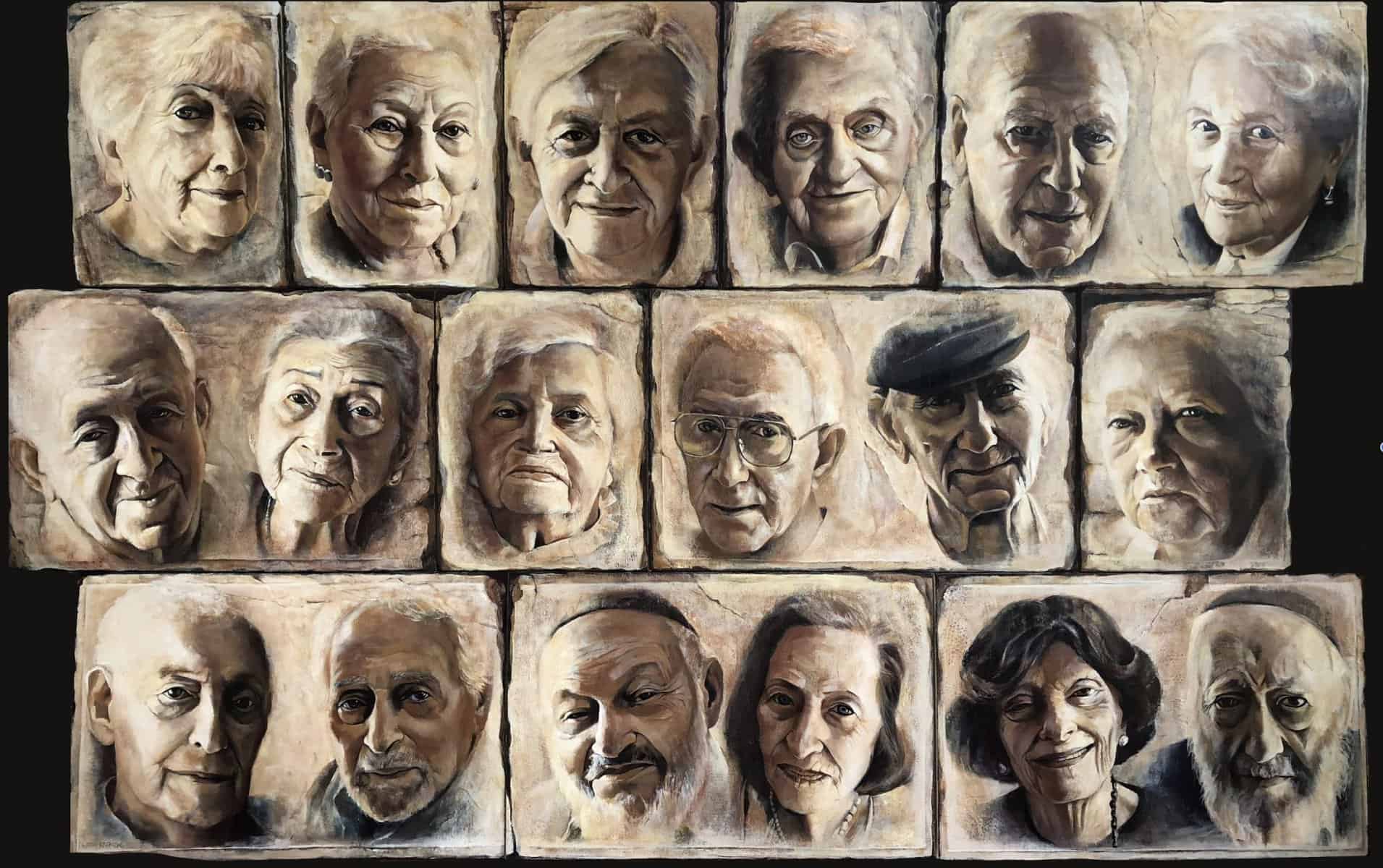Like many artists, Debra Kapnek focuses on painting subjects that interest her – still life, landscapes and abstract compositions.
Painting portraits of Holocaust survivors was not among her interests – until she met Seymour Meyer, a neighbor and Holocaust survivor who shared his story with her.
It was the chance meeting and her developing friendship with Meyer that launched Kapnek on her quest – and mission – to create portraits of Holocaust survivors.
Some of Kapnek’s artwork is in the permanent collection of the Florida Holocaust Museum, while “Chai (Life) – 18 Portraits of Women Holocaust Survivors” is installed at the JFCS Brodsky Enrichment Center in Wynnewood, Pennsylvania.
“The mission chose me. I have always been captivated by anyone who survived such a nightmare and built a new life,” Kapnek said of the Holocaust paintings.
Kapnek shared her mission and what she learned from the survivors at the Jewish Center of Princeton’s Yom HaShoah/Holocaust Remembrance Day on April 27. It was co-sponsored by Congregation Beth Chaim in West Windsor and Congregation Beth El in Yardley, Pennsylvania.
During one of their many conversations, Meyer told Kapnek that his father taught him to become a shoemaker, and that it was his skill as a shoemaker that helped him to survive in the concentration camp.
“He told me his story and as I listened, I saw his eyes were telling me a story beyond words. I watched his face. I decided to paint (a portrait of) him, and one thing led to another,” Kapnek told the attendees.
After she completed the portrait of Meyer, Kapnek continued with a series of portraits of Holocaust survivors. She found her subjects in New York, New Jersey, Los Angeles, Los Vegas and Florida.
The artist traveled to her subjects’ homes to learn more about them. She asked basic questions and listened to their stories. She took photographs of each person, which she used as the basis for the paintings that she created in her studio in Elkins Park, Pennsylvania.
Each portrait is unique, and each pair of eyes tells their own story, she said. The purpose of the portraits is to personalize the survivors’ stories and to link a face with a story.
“As I worked on it, I heard their voices. One woman lost her entire family, (yet) she was sweet and loving. One Auschwitz survivor said that to live, you had to behave like an animal,” Kapnek said.
“There cannot be enough documentaries, there cannot be enough films, there cannot be enough art about the Holocaust. Their stories are different, but their eyes convey the message – ‘remember us,’ ” Kapnek said.
One of the lessons that she learned from the survivors is to “never underestimate the power of the human spirit,” she said. A strong spirit called each one of them to live.
What the survivors all had in common was the decision to choose love over hate, which enabled them to transcend what had happened to them in the concentration camps, Kapnek said.
The Holocaust marked the survivors in different ways, she said. Some lost faith and others found faith. Some kept the Jewish traditions.
“It is my hope that we will remember – in addition to the millions of lives we lost – are the survivors,” Kapnek said.

